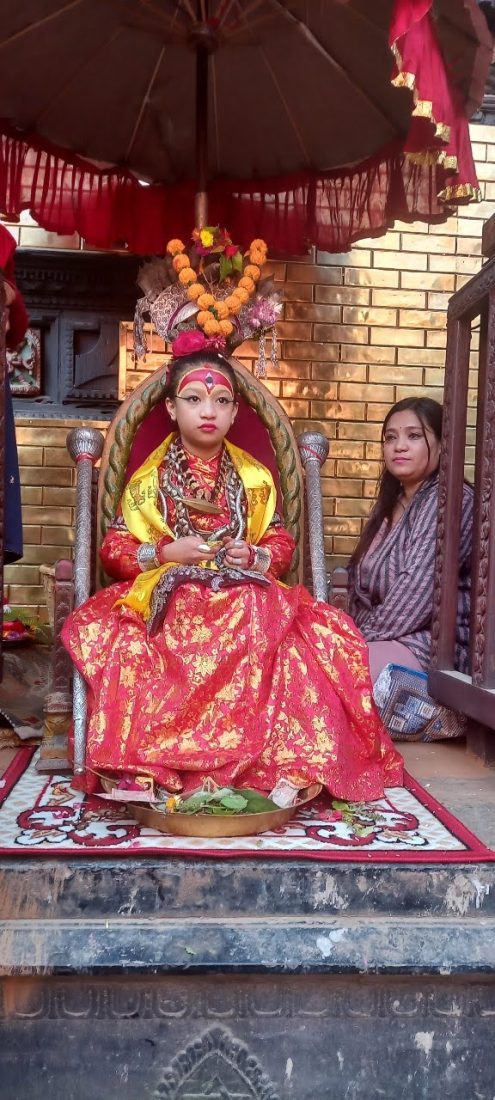10 Fascinating Facts About the Kumari of Lalitpur
Nestled in the heart of Nepal’s cultural heritage, Patan (Lalitpur) is home to one of the most extraordinary traditions in the world—the worship of the Kumari, the Living Goddess. As the embodiment of divine feminine energy, the Kumari symbolizes purity, power, and spirituality. This centuries-old tradition, deeply rooted in Newari culture, continues to captivate both locals and visitors.
Here are ten remarkable facts about the Kumari of Patan that highlight her significance and unique role in the community.
1. Who is the Kumari of Patan?
The Kumari of Patan is a young girl chosen to represent Taleju Bhawani, a Hindu goddess, and, in some interpretations, the Buddhist deity Vajradevi. Worshipped by both Hindus and Buddhists, she is a living symbol of Nepal’s religious harmony.
2. Why is She Worshipped?
The Kumari is believed to be the physical manifestation of divine energy. Devotees seek her blessings for prosperity, protection, and good fortune, and her presence is said to bring peace and harmony to the community.
3. Origins of the Kumari Tradition
This sacred tradition dates back to the Malla dynasty. Legend has it that King Jayaprakash Malla of Kathmandu once received divine counsel from Goddess Taleju. When he failed to uphold his vow of secrecy, the goddess vanished, promising only to return in the form of a young girl from the Shakya caste. Thus, the Kumari tradition was born and continues to thrive in Patan and other cities of the Kathmandu Valley.
4. A Sacred Selection Process
Becoming a Kumari is no ordinary process—it involves rigorous tests. She must be from the Shakya caste of the Newar community, traditionally known for goldsmithing and spiritual knowledge. The selection process includes checking her fearlessness, her horoscope’s alignment with the king’s, and her ability to remain calm in the presence of severed animal heads—a test of divine strength.

5. Chosen at a Young Age
The Kumari is typically selected between the ages of 3 and 5, as she is believed to be in her purest form, untainted by worldly experiences.
6. A Cultural Icon for Patan
To the people of Patan, the Kumari is more than just a religious figure—she is a cultural symbol and a unifying presence. Her blessings are sought during festivals, life events, and religious ceremonies, making her an essential part of the city’s heritage.
7. When Does a Kumari Retire?
A Kumari’s reign ends when she reaches puberty. It is believed that with the onset of menstruation, the goddess departs from her body, signaling the need for a new selection.
8. Life After Kumari
After stepping down, a former Kumari returns to a normal life, yet she remains highly respected within the community. While once shrouded in divine reverence, she often becomes an advocate for cultural preservation, ensuring that this ancient tradition continues.
9. Festivals and Public Appearances
The Kumari is especially revered during festivals such as Dashain and Indra Jatra, where she is carried in a grand public procession. Thousands of devotees seek her divine blessings, making these moments among the most auspicious times to witness her presence.
10. The Shakya Caste Connection
The Shakya caste of the Newar community has a strong connection to the Kumari tradition. Known for their spiritual knowledge and craftsmanship, they have preserved this sacred custom for centuries, ensuring that its cultural and historical significance remains alive in Patan.
A Living Legacy of Nepal's Spiritual Heritage
The Kumari of Patan is not just a religious figure—she is a living testament to Nepal’s rich cultural history. She bridges the divine and the earthly, preserving a tradition that has endured for generations. For the people of Patan, she remains a symbol of pride, spirituality, and unity, embodying the very essence of their heritage.
Also read our blog on 10 Ways to Connect with the Locals in Kathmandu.











